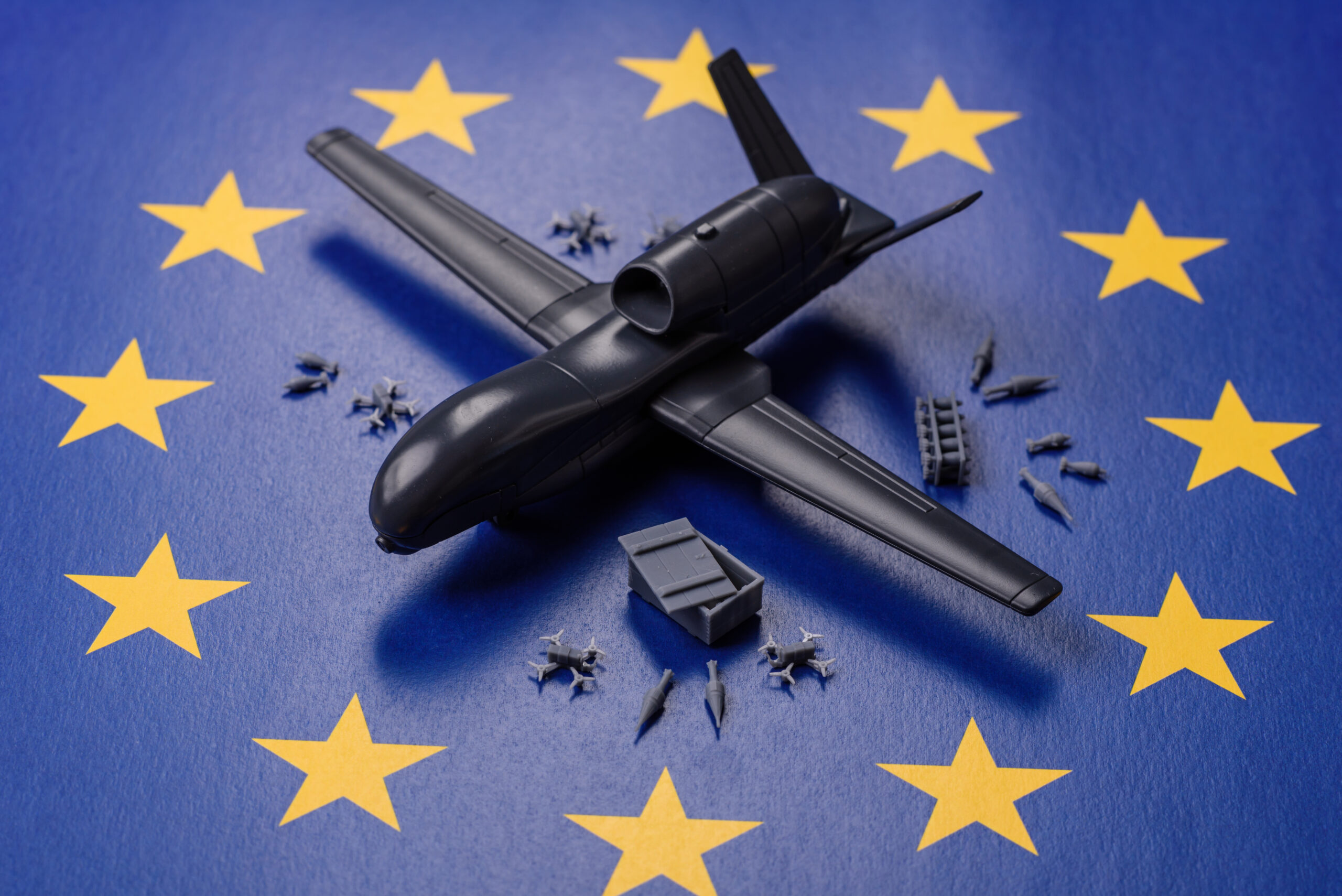
Leaders of the 27 European Union (EU) nations have coalesced around the Defense Readiness Roadmap 2030, a plan to achieve a state of military-security readiness and strategic autonomy by the end of the decade. Agreed upon in October, the plan initiates a momentous investment in defense, beginning in 2026, aimed at providing Europe with sufficient capabilities to both deter and respond to any adversary’s aggression across all domains (air, land, sea, cyber, and space).
Atop the list of priorities in the Roadmap are four flagship projects, with two receiving special urgency: the European Drone Defense Initiative and the Eastern Flank Watch. This prioritization is directly due to Russia’s use of hybrid warfare, which includes the repeated penetration of EU-NATO airspace by both manned aircraft and drones in countries like Estonia, Poland, and Romania. This activity is viewed as a means of testing European air-defense readiness while creating widespread public unease and imposing economic pain.
The European Drone Defense Initiative is the official title of the proposed “drone wall,” a multilayered, technologically advanced mosaic of counter-drone capabilities. Envisioned to be operational by late 2027, the plan calls for a 360-degree approach, leveraging sensors, radars, and acoustic detectors to track unmanned aerial systems (UASs). Neutralization would then rely on a range of elements from machine guns and lasers to small missiles and interceptor drones.
However, the ambitious concept has drawn immediate criticisms for being unrealistic, costly, and risking a misplaced focus on the lower-threat airborne spectrum rather than the upper-tier threat of missiles.
The Drone Defense Initiative is couched within the broader Eastern Flank Watch, a larger integrated defense network covering the Baltic and Black Sea areas. This comprehensive plan combines air defense with ground defense systems and maritime security to build resilience against, and response to, an array of conventional, cyber, hybrid, and maritime threats utilized by Russia and Belarus. Implementation is set to begin in 2026, with full functionality reached by late 2028.
Ultimately, the Roadmap’s initiatives, while ambitious, face an inherent strategic conflict. Naturally, those countries along Russia’s extended borders view these projects as urgently required and necessary, but EU members situated further away question their cost, viability, and the imposition of defense decisions by Brussels into what they consider sovereign national prerogatives. The aims of the European Commission are therefore bound to encounter multiple challenges (detailed at length here back in March), including national politics, capabilities gaps, and the general belief in national capitals that defense industrial sovereignty should be decided at home.
The EU has attempted to pre-empt the financing issue by offering up over EUR150 billion ($175 billion) in cheap loans under the Security Action for Europe (SAFE) funding mechanism, with more financing dangled for the next Multi-Annual Financial Framework. Furthermore, to provide unifying oversight, member states will lean on the European Defense Agency (EDA) to ensure projects remain on track and avoid duplication. The plan also seeks to foster ‘capability coalitions’ – small groupings of nations – to break down barriers rather than relying on a one-size-fits-all approach.
Yet, despite these sensible steps on paper, national perspectives still threaten to intrude. Concerns persist over strengthening EU defense planning above that of NATO (of which 23 EU member states belong), as well as perceived intrusion by EU Military Staff into sensitive national military affairs. Generous offers of financing coupled with centralized oversight may not be enough to overcome the prerogative of sovereign decision-making. More critically, the fear of Russia may not be sufficient to sustain resolve if other national political or economic concerns arise over the long term.
Dan Darling is Forecast International’s director of military and defense markets. In this role, Dan oversees a team of analysts tasked with covering everything from budgeting to weapons systems to defense electronics and military aerospace. Additionally, for over 17 years Dan has, at various times, authored the International Military Markets reports for Europe, Eurasia, the Middle East and the Asia-Pacific region.
Dan's work has been cited in Defense News, Real Clear Defense, Asian Military Review, Al Jazeera, and Financial Express, among others, and he has also contributed commentary to The Diplomat, The National Interest and World Politics Review. He has been quoted in Arabian Business, the Financial Times, Flight International, The New York Times, Bloomberg and National Defense Magazine.
In addition, Dan has made guest appearances on the online radio show Midrats and on The Media Line, as well as The Red Line Podcast, plus media appearances on France 24 and World Is One News (WION).




